If you have a piano, I recommend making out a melody on the piano since it's somewhat easier than just putting random notes on the sequencer.
Also using scales and key signatures is a good aid in music making.
Make out a chord progression to which will suit your melody, then start placing down notes relative to the chord keys you used in your progression earlier so that the song flows well with your chord prog.
To explain chord keys: There is the root which is at the very bottom and is the most important note in your chords, then there is the third that is three semitones (relative to your key signature) above the root, and finally there is the fifth which is five semitones (relative to your key sig) above the root note which is what a "triad" is built up of in music theory.
Here's how a triad looks in the sequencer:
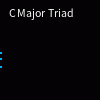
You can start out by placing down your root notes to make a simple bassline, then fill out the thirds and fifths after. (thirds and fifths are not a rule, you can also put a root and a fifth together and it will still sound good)
If you're feeling a little special you can use sixths, sevenths to give your song a different feel.
Here is how different chord progressions can change the vibe of the song entirely:
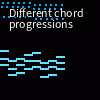
After choosing your chords, you can use tones from scales as aforementionned above and find notes that fit the mood of your chord progression
Scales are basically your key signature however there are two main scales. There are heptatonic scales with 7 tones (they're just your key sig) and pentatonic with 5 tones
Here's an example
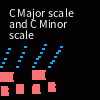
After finding cool-sounding notes, you can place them in a variety of patterns. You can either make a simple ascending arpeggio (which is basically notes going higher) or other stuff if you get creative with your rhythm patterns. Using polyrhythms is a good way to find memorable melodies or to make your melody stand out more from the chord progression.
A polyrhythm is basically two rhythms superposed on each other
Here's an example in the sequencer:
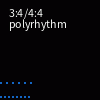
Try to find a catchy rhythm (a rhythm determines when the notes are played in a sequence). For instance: tresillos or 3/3/2/3/3/2 rhythms is an example of a somewhat catchy rhythm cause it makes your melody stand out more from the chord progressions
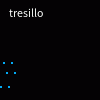
Here's what a tresillo is if you want a musical visualization
At the end, when you have applied all simplified protocols for composing (scales, keys, good chord prog) ask yourself if you can hum this melody to yourself to verify if it is memorable enough. If not, try to improve it. After all, the melody is what most people will judge your song by.
I hope you've read this advice with great attention casuse i've done my best to simplify it and give you a good explanation on how to compose
(FYI: This is a condensed version of Electroll's tutorial series on how to compose music and apply music theory to your songs.)
You can check that here:
https://www.youtube.com/watch?v=zJo90I4s...WRkQtojqXe